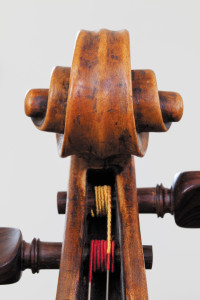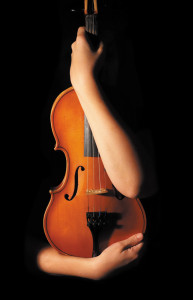To know chamber music is to revere it. To hear chamber music is to enjoy it.
– Homer Ulrich
Chamber music, the so called “music of friends,” is a satisfying and pleasurable form of music, not well known today in comparison to larger symphonic works played by symphony orchestras. It is music of a more intimate nature played by a small ensemble of performers playing only one on a part.
Sharon Calonico, violinist with the Golden Gate String Quartet said, “It is a thrill to play in a large orchestra and help bring the conductor’s interpretation of a piece to life, but I play chamber music for my soul. In a string quartet, we work together in rehearsals to create a shared vision and interpretation of how a piece should be performed,” she explained. “I have the freedom to be expressive in a completely different way than when I play in an orchestra.”
The performance setting for a String Quartet is not large concert halls but smaller venues, like a small room or chamber. In the 18th century for example, the venue might be a room in a palace or a room in the court of a prince. One of the distinguishing characteristics of chamber music is it is played without the services of a conductor.
Although elements of chamber music existed long before the 18th century, it is a misguided effort to try to directly relate it to the modern string quartet from 1750 to the present. The earlier examples differ greatly in terms of form and style. Franz Joseph Haydn (1732-1809) is known as the father of the string quartet.
The String Quartet
This became a favorite medium of chamber musicians as we know it today. After many changes of instrumentation it came into being circa 1745. The classic string quartet is made up of two violins – first and second, one viola and one cello. It has remained so to this day.
Quartets of the mature Haydn were written in four movements:
I. Slow introduction then fast,
II. Slow,
III. Minuet,
IV. Fast
His quartets are very similar to his symphonies. The viola and cello take on a new importance in terms of melodic possibilities, rather than just accompanying and providing harmonic support of the melody. Haydn believed each instrument should have equal musical interest. One part should not dominate the other parts.
In chamber music, the emphasis lies on the ensemble, not on the individual player. “There is nothing like the camaraderie and bonding that develops between the members of a chamber group,” Calonico said. Goethe described the string quartet as, “the serious conversation of four friends.” “No other music is at once so rich and yet as delicate as (Haydn’s) chamber music,” writes Thomasine McGehee in her book, People and Music. The string quartet gave Haydn the opportunity to express his true personal emotions.
The Instruments
The violin is the treble or soprano member of the string family. The first attempt at making a “new generation” of violins was credited to Casper Tieffenbrucker in the year 1500.
Significantly improved instruments were developed by famous Italian craftsmen, Andrea Amati in the mid 1500’s, Nicola Amati (1596-1684), Antonio Stradivari (1644-1737) and Giuseppe Guarneri (1698-1744). The instruments made by these masters are priceless today. The four strings of the violin are G, D, A, E.
The viola is the alto member of the family. It is larger than the violin thereby producing lower tones. To the untrained eye the violin and viola are similar in design. The viola is mainly used as an ensemble instrument rather than a solo instrument. The viola part is written in the alto clef. The strings of the viola are a 5th lower than the violin. C, G, D, A.
The violoncello or cello is the tenor/bass member of the string family. It is tuned one octave below the viola, C, G, D, A. The cello came into existence with the violin and viola. Some of the earliest examples were produced by Andréa Amanti in the middle 16th century. Its early appearance in orchestral scores were as an accompaniment, rather than as a solo instrument.
Homer Ulrich in his book, Chamber Music, wrote, “The string quartet is without a doubt, one of the greatest musical achievements of Western Civilization.”
Franz Joseph Haydn
He was a great innovator and experimenter who expanded and perfected the form and style of both the symphony and the string quartet. His compositions include over 100 symphonies, 83 string quartets and many operas, masses and oratorios. His phenomenal output of music was done mostly in the employ of the aristocratic Esterhazy family. It was here that Haydn gained his notoriety as the founder of the classical string quartet.
Quartets existed before Haydn but “He established the form and the high artistic level to which it has since adhered,” said Martin Bernstein in An Introduction to Music. Haydn brought the same excellence to the string quartet as he did his symphonies. His genius made him outstanding and set a high standard for others to follow.
The Danville Community Band presents its annual museum concert at the Blackhawk Automotive Museum, March, 29 at 2:00 p.m. Concert FREE with Museum entrance fee. Please submit your questions and comments to banddirector01@comcast.net Visit our website at www.danvilleband.org for up-to-date information about the Danville Community Band.
Leave a Reply